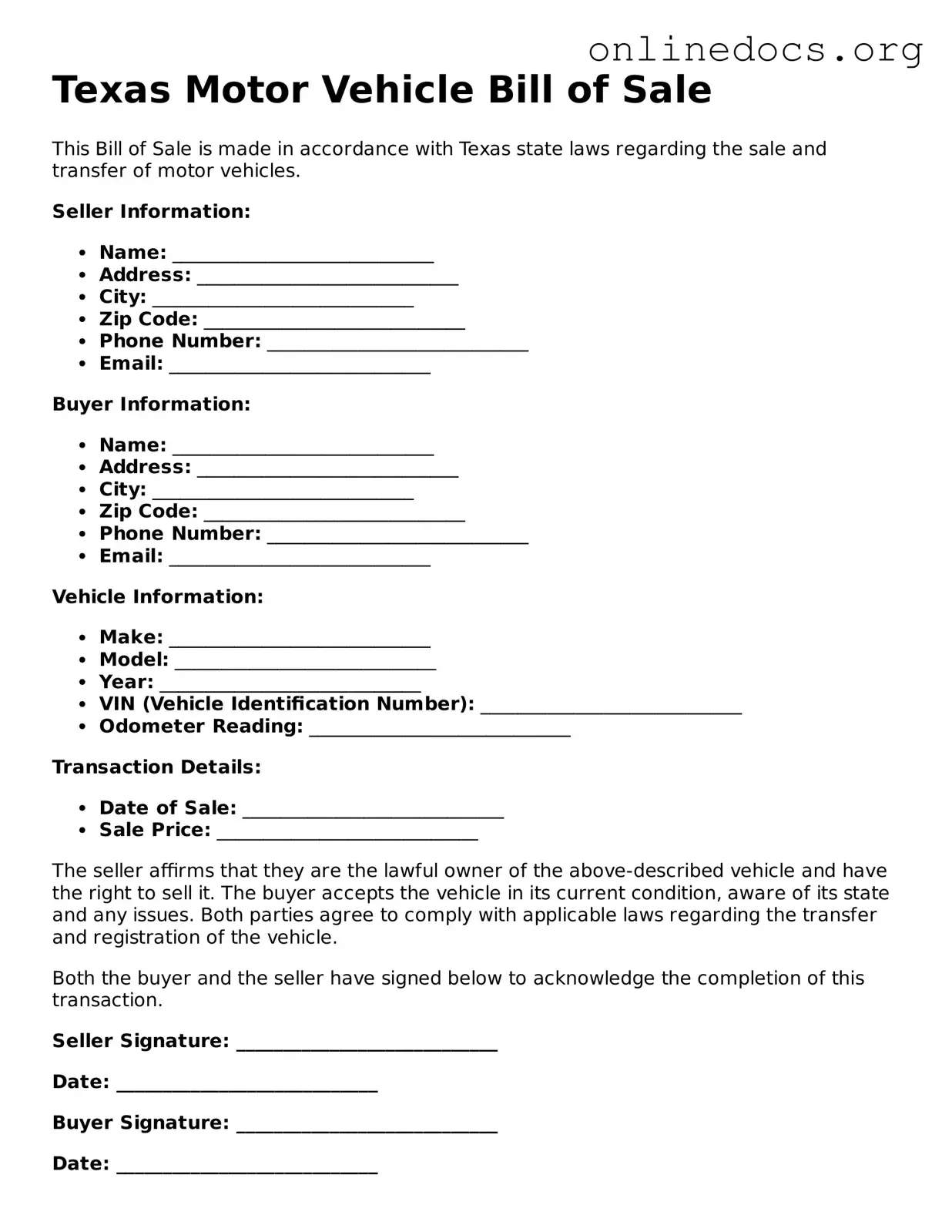The Texas Vehicle Transfer Notification form serves a similar purpose as the Bill of Sale. This document is used to inform the Texas Department of Motor Vehicles when ownership of a vehicle changes. While the Bill of Sale is primarily a receipt for the buyer, the Vehicle Transfer Notification ensures that the seller is no longer responsible for the vehicle after the sale. Both documents require details about the vehicle, including the VIN and the names of the buyer and seller, but the notification focuses on updating the state's records.
The Odometer Disclosure Statement is another document that aligns closely with the Bill of Sale. This statement is required when a vehicle is sold to disclose the mileage at the time of sale. It protects both parties by ensuring transparency regarding the vehicle's condition. While the Bill of Sale records the transaction itself, the Odometer Disclosure Statement specifically addresses the odometer reading, which is crucial for determining the vehicle's value and history.
The Application for Texas Title is also similar to the Bill of Sale in that it is a necessary document when transferring ownership of a vehicle. This application is submitted to obtain a new title in the buyer's name. While the Bill of Sale serves as proof of the transaction, the Application for Texas Title is the official request to change the vehicle's title records. Both documents require similar information about the vehicle and the parties involved.
The Vehicle Registration Application has a parallel function to the Bill of Sale, as it is needed to register a vehicle after purchase. This document collects information about the vehicle and its owner for state records. While the Bill of Sale acts as proof of ownership transfer, the Vehicle Registration Application ensures that the vehicle is legally registered for use on public roads. Both documents are essential for legal vehicle operation in Texas.
For those looking to create an impactful application, utilizing a well-rounded Recommendation Letter can be highly advantageous in presenting one's qualifications effectively. To streamline this process, consider exploring our guide on how to craft a comprehensive Recommendation Letter form by visiting this resource.
The Power of Attorney form can be related to the Bill of Sale in situations where the seller appoints someone else to handle the sale on their behalf. This document grants authority to another person to sign the Bill of Sale and other related documents. While the Bill of Sale records the transaction, the Power of Attorney ensures that the designated person has the legal right to act for the seller, facilitating the transfer process.
The Affidavit of Heirship is another document that can be similar in cases where a vehicle is inherited. This affidavit is used to establish the rightful ownership of a vehicle after the original owner has passed away. While the Bill of Sale is used for typical sales transactions, the Affidavit of Heirship serves as proof of ownership transfer in the context of inheritance, ensuring that the new owner can legally claim the vehicle.
Lastly, the Sales Contract or Purchase Agreement can be compared to the Bill of Sale. This document outlines the terms of the sale, including price, payment method, and any conditions agreed upon by the buyer and seller. While the Bill of Sale serves as a final receipt for the transaction, the Sales Contract details the agreement leading up to that point. Both documents are crucial for protecting the interests of both parties involved in the sale.
